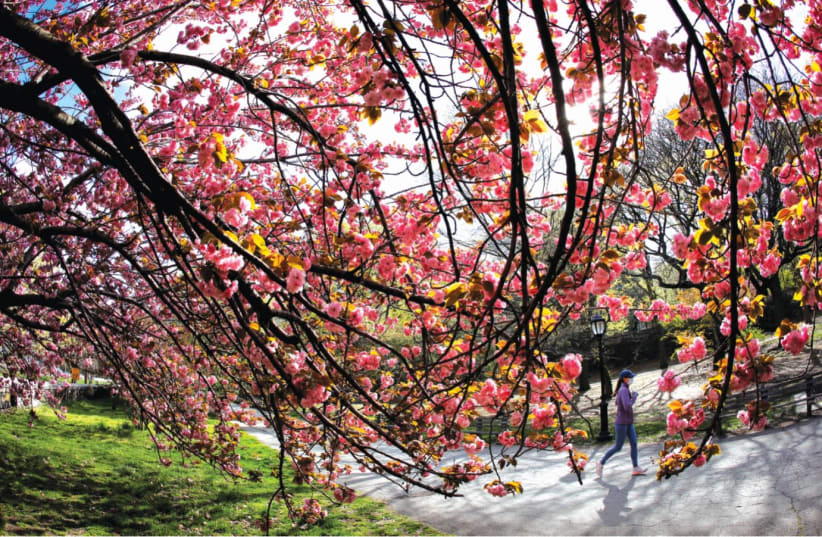The flight was challenging due to strict mask-wearing conditions. One person even had a panic attack screaming he didn’t want to die because a couple of his fellow passengers had not fully covered their noses. Those numerous COVID tests, though necessary, were tedious, reminding one of hospitals more than of a holiday. Two vaccines and prior tests only hours before flying were not sufficient. Yet it was all well worth it to reunite with my son who lives in Manhattan after over a year in which he ventured out to work in a deserted city during the pandemic.
Though the New York City I encountered was very much downsized with most hotels closed, and no Broadway shows New York was in full bloom – cherry blossom bloom. The city that prides itself on its tourists had to make do with the locals riding the few carriages on Central Park. New York has reinvented itself. Everything outdoors was huge.
Entertaining outdoor concerts in Central Park, a whole range of gym classes in the park, fabulous museums and creative street fairs. A dear friend of mine, a well known TV personality who invited me to an outdoor dinner – only her forth dining out experience in more than a year – told me how it was New York’s spring of hope emerging out of a long winter.
The COVID pandemic also magnified the stark contrast between the well off and the poor in New York City. Many of those who once belonged to the middle class have now become the new poor. Maybe because I missed our seven-month old puppy Fluffy so much that I became more aware of the large number of dogs on the streets of Manhattan. I struck a conversation with one pet owner who told me that every morning she sends her puppy to a daycare. When I plead ignorance that such a thing existed she stressed how daycare for dogs is so much in demand that it has even a long waiting list.
Later on that day basking in the warmth of a beautiful sunny spring day in Bryant Park while waiting for my son, I witnessed abject poverty. An attractive young woman was scouring through trash bins in the park and digging leftover sausage peels covered in ketchup and snatching it. It shocked me how famished she appeared to be devouring the leftover food with her bare fingers. She did the rounds of all the trash bins in the park and when she neared me again I smiled at her and put some money in her hand as I had no food in my bag. She looked at me in disbelief and smiled a vacant smile. I remembered Jacob’s blessing to his son: “Showing the white of your teeth counts more than feeding a person with milk.”■
Shoshana Tita is a journalist and director of TLC in Potomac, Maryland, and currently resides in Jerusalem
